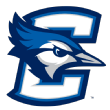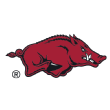Last season's Kansas Jayhawks seemed to possess the talent to win Bill Self's second national title, before the cancellation of the NCAA tournament due to concerns about COVID-19 eliminated the championship dream for KU and a host of others. That Jayhawks team featured a new look for Self, a four-guard lineup with big man Udoka Azubuike in the paint.
This season? Self has gone even smaller, using a lineup that features Jalen Wilson, a versatile 6-foot-8 wing-forward, as an inside-outside threat throughout the game. Wilson played a key role in his team's 65-61 win over North Dakota State on Saturday, collecting 14 points and 15 rebounds while also slowing down North Dakota State's Rocky Kreuser, a 6-foot-10 post player.
Wilson is one of the most influential players in America, and he doesn't have a real position. That's becoming more common in college basketball, Self said.
"I think the NBA is kind of showing us that this is the wave of the future," he said.
As Wilson and Kansas get set to face Creighton (5 p.m., ET, ESPN) and its own positonless standout in Damien Jefferson, here is a list of some of the top positionless players already impacting the hierarchy of college basketball.

Jalen Wilson, Kansas: WIlson can play 3, 4 or 5. In Saturday's nail-biting win over NDSU, he guarded multiple spots, led the team on fast breaks, scored from beyond the arc and played big in the paint, using his strong spin move to get to the rim. For a Kansas team that switches constantly on defense, he's an incredibly important contributor. Thus far, the Jayhawks have been significantly better on defense with Wilson on the floor, forcing turnovers on one-fifth of their opponents' possessions and holding them to just 85 points per 100 possessions, per hooplens.com.
"He just competes," Kansas forward Christian Braun said. "He doesn't really care where [Self] puts him position-wise."

Damien Jefferson, Creighton: He's not Creighton's best player, but Jefferson is certainly one of the most important competitors on the roster. He can guard opposing post players, but he's also quick enough to defend on the perimeter. One of the top plays from his team's 93-58 win over Kennesaw State on Friday? Jefferson, 6-foot-5 and 220 pounds, intercepted a pass at the top of the key and finished with a one-handed flush on the other end. The Bluejays are a difficult matchup for any team in the country with Jefferson (10.0 PPG, 3.7 RPG, 2.3 APG) on the court.

Jeremiah Robinson-Earl, Villanova: What can you do with a 6-foot-9 forward who can put the ball on the floor and create his own shot off the dribble with ease? Texas couldn't figure him out in Sunday's 68-64 loss -- Robinson-Earl had 19 points, eight rebounds, two assists and a block. With Villanova leading 62-60 in the final minute of the game, all five Longhorns were ready to help if Robinson-Earl drove to the lane after he'd caught a pass at the free throw line. Instead, he found Jermaine Samuels, who exploited the pressure on his teammate to cut between a pair of defenders for the bucket that extended Villanova's lead to four. Robinson-Earl also dove for loose balls and made key defensive stops down the stretch. Robinson-Earl is one of the best players in the country.

Andrew Nembhard, Gonzaga: Gonzaga's 87-82 win over West Virginia on Wednesday showcased the value of Nembhard, the Florida transfer who was granted eligibility just prior to the start of the season. The 6-foot-5 guard helped the Gonzaga offense maintain its momentum after Jalen Suggs missed time with an ankle injury, an effort that helped Nembhard secure West Coast Conference player of the week honors.
With Nembhard (19 points, six assists, five rebounds against West Virginia), Mark Few has a guard he can use to run his offense as a backup to Suggs or play next to the dynamic freshman. Who wants to deal with that backcourt in March? He's not vulnerable against bigger players on defense, and his speed-and-size combo makes Nembhard difficult to stop once he goes downhill. Proof? He has finished 80% of his shots at the rim, per hoop-math.com.

Micah Peavy, Texas Tech: He's a freshman with a lot to learn, but Chris Beard has a special player in Peavy. He has a high basketball IQ, he's strong, he doesn't waste plays and he's content to perform the blue-collar tasks on the court. In a 64-53 loss to Houston on Nov. 29, the 6-foot-7 Peavy's points mostly came from grit: backdoor cuts, hard drives and forceful finishes (12 points, four rebounds). He's the kind of athlete who might not get much praise for his raw numbers yet, but he should receive plenty of love from the analytics crowd.
Peavy is averaging 6.8 PPG in just over 22 minutes per contest. But Texas Tech is averaging 117 points per 100 possessions on offense and forcing turnovers on 26% of its opponents' possessions with Peavy -- who has made 59% of his shots inside the arc -- on the floor, per hooplens.com. Synergy Sports lists him as an "excellent" defender. He could evolve into a young star for the Red Raiders.

Moses Moody, Arkansas: Moody kicked off his team's 86-50 win over Lipscomb on Saturday with back-to-back 3-pointers early in the matchup. Toward the end of the first half, he hit a jump shot over the outstretched hands of Lipscomb's 6-foot-8 forward Ahsan Asadullah. Eric Musselman is just letting the freshman, who won SEC freshman of the week honors on Monday, use all of his skills. At 6-foot-6, Moody -- a projected second-round pick in ESPN.com's latest mock draft -- is an intentional wing with a big frame. He has made 38% of his 3-pointers and 86% of his free throws, marks that should persist even when his team's schedule gets tougher in SEC play. He's just a baller.

Joe Wieskamp, Iowa: Yes, he opens up the floor for Luka Garza but also creates drama for opposing coaches on his own. You can't give Wieskamp too much room to shoot -- the 6-foot-6 athlete is 6-for-12 from the 3-point line thus far and two years removed from a 42% campaign from the 3 as a freshman. With Garza and Wieskamp, Iowa has a one-two combo that's just difficult for any team in the country to defend. That Wieskamp is comfortable floating when necessary or getting touches around the rim is an incredible asset for Fran McCaffery's program. You can't really put Wieskamp in a box this season.

Keyontae Johnson, Florida: COVID-19 forced Florida to delay its season, but its first three games have been a showcase for what Johnson can become for Mike White's team. A year after connecting on 38% of his 3-pointers, 60% of his shots inside the arc and 77% of his free throw attempts, Johnson -- a projected first-round pick in ESPN's latest NBA mock draft -- scored 16, 24 and 19 points in his team's first three outings. He can play like a traditional guard, but his athleticism gives him the ability to impact the game above the rim. His alley-oop dunk in the first half of his team's 86-40 win over Stetson on Sunday is already one of my favorite plays of the year.
The anatomy of a 40-point run
During Sunday's 101-46 victory over Cleveland State, Ohio recorded a 40-0 run, an NCAA record for a game involving two Division I teams. In the second half of the historic effort, an Ohio assistant tried to get head coach Jeff Boals' attention.
"He said, 'Coach, do you want to take Jason Preston out?'" Boals recalled. "I'm like, 'No. Why?' He said, 'Coach, we're up by 47.' ... I had no idea it was happening while it was happening."
From the 1:41 mark of the first half, when Ohio led 46-25, until the 8:03 mark of the second half -- Ohio had an 86-27 lead after a pair of free throws by Cleveland State -- the opposing team didn't score.
Boals said his team will enjoy the moment without overemphasizing it because it's a rare thing.
"You look back and you couldn't script something like that," he said. "Everything had to go perfect."
Boals said he has been on the other end of a similarly dominant effort. During the 2001-02 season, he was an assistant at Marshall in a 116-76 loss to Kent State.
"You just sit there and see if they can do it AAU-style," he said, "and keep a running clock."
The wild 3-point explosion at Liberty continues
Liberty's 4-2 record includes a pair of wins over SEC teams, Mississippi State and South Carolina.
The box scores from those games intrigued me. Liberty shot 65 3-pointers combined in those two games and made 46% of them. In Saturday's 86-64 win over Bluefield, an NAIA school, Liberty took 43 shots from beyond the arc.
Last season, about four out of every 10 shots were 3-pointers for head coach Ritchie McKay's squad. This year? It's nearly six out of 10. If that number holds, the program will set a KenPom record for 3-point-attempts percentage -- the percentage of a team's total field goals that are 3-pointers. But here's the other thing to consider: Liberty has also made 37% of its attempts, a top-60 mark nationally.
"We just thought this would be a better [version of our offense] for this group," McKay said about the change from last year's team.
McKay told ESPN that Chris Parker and his other guards have helped stabilize his offense after last year's 30-win team lost multiple veterans. Keegan McDowell and Elijah Cuffee are both shooting over 37% from beyond the arc.
McKay said he hopes his team can be effective against a surging Missouri team when they meet on Wednesday. He didn't offer many details about his team's offensive strategy. Judging by the numbers, he probably didn't have to.
"I want to be as difficult to scout as possible," he said.
